Marketing Metrics
Feb 13, 2024
By Ari Manor , CEO at ZOOZ

This is one in a series of articles that provide detailed and updated information about Marketing. In this specific article, which focuses on Marketing Metrics, you can read about:
- Marketing Metrics
- KPIs
- Marketing KPI Dashboard
- Reach
- Qualified Leads
- How Marketing Can Help Sales
- Are Marketing Expenses Tax Deductible
- Marketing Budget
- Marketing Budget Template
For additional articles about Marketing, see the Topic Menu.

Marketing Metrics
Marketing metrics are crucial for evaluating the effectiveness of marketing activities, guiding strategic decisions, and optimizing performance. These metrics help marketers and businesses understand the return on investment (ROI) of their marketing efforts, identify areas for improvement, and justify marketing expenditures. Here's an overview of key marketing metrics that are essential for tracking and analyzing marketing success:
- Return on Investment (ROI): Measures the profitability of marketing campaigns by comparing the net profit to the cost of marketing activities. It's vital for assessing the overall effectiveness of marketing strategies.
- Customer Acquisition Cost (CAC): Calculates the total cost of acquiring a new customer, including all marketing and sales expenses. This metric is essential for understanding the efficiency of marketing efforts in driving new business.
- Conversion Rate: Indicates the percentage of visitors or leads that complete a desired action, such as making a purchase or signing up for a newsletter. A high conversion rate suggests effective marketing and website optimization.
- Customer Lifetime Value (CLTV): Estimates the total revenue a business can expect from a single customer over the course of their relationship. CLTV helps in determining how much to invest in customer retention and acquisition.
- Website Traffic: Measures the number of visitors to a website. Analyzing traffic sources (organic, paid, direct, referral) provides insights into which marketing channels are most effective at driving visitors.
- Engagement Rate: Reflects the level of interaction with content across digital platforms, including social media likes, shares, comments, and time spent on a page. High engagement rates indicate content relevancy and effectiveness.
- Social Media Metrics: Includes followers, likes, shares, and comments, which help gauge brand presence and audience engagement on social media platforms.
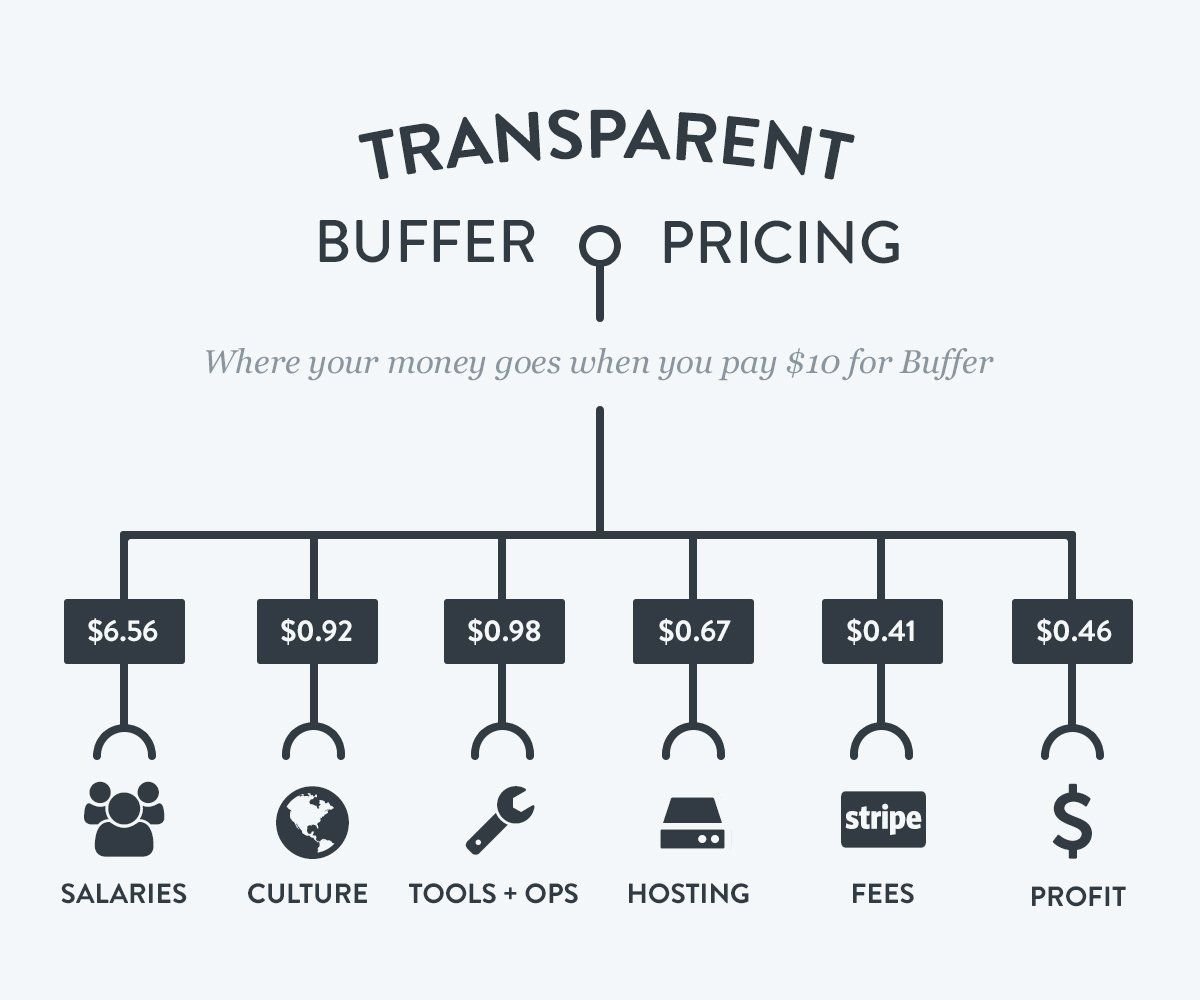 Case Study: Buffer's Transparent Marketing Analytics
Case Study: Buffer's Transparent Marketing Analytics- Company: Buffer, Online (ongoing)
- What Was Done: Buffer, a social media management tool, adopted a transparency-first approach in its marketing by publicly sharing its marketing metrics, including blog traffic, email signup rates, and social media engagement. This strategy was intended to build trust with its audience and provide insights into effective social media strategies.
- Results/Impact: Buffer's transparency in sharing marketing metrics not only garnered significant attention in the marketing community but also contributed to a steady increase in its user base. The company saw a 40% year-over-year increase in sign-ups, attributed partly to its open sharing of what works and what doesn’t in digital marketing.
- Email Marketing Metrics: Open rates, click-through rates (CTR), and unsubscribe rates provide insights into the effectiveness of email marketing campaigns and subscriber engagement.
- Lead Generation Metrics: Tracks the number of leads generated through marketing efforts and their progression through the sales funnel, helping to assess the effectiveness of lead generation strategies.
 Case Study: Adobe's Digital Marketing Suite Success
Case Study: Adobe's Digital Marketing Suite Success- Company: Adobe, Worldwide (2014)
- What Was Done: Adobe repositioned its marketing strategy to focus on digital marketing solutions, promoting its Digital Marketing Suite through targeted campaigns. These campaigns highlighted the suite’s ability to provide actionable insights and improve marketing efficiency, utilizing case studies, webinars, and whitepapers.
- Results/Impact: Adobe’s focused marketing efforts led to a significant increase in the adoption of its Digital Marketing Suite. Adobe reported a 24% year-over-year revenue growth for its digital marketing segment, solidifying its position as a leader in the digital marketing industry.
- Brand Awareness: While more difficult to quantify, surveys, brand search volume, and social mentions can provide insights into brand recognition and visibility in the market.
- Bounce Rate: The percentage of visitors who navigate away from a site after viewing only one page. A high bounce rate can indicate that the website content is not meeting user expectations or that the user experience is lacking.
- Nevertheless, please note that many visitors simply find their answer in the page the landed at… especially if it is a comprehensive and informative page.
- Nevertheless, please note that many visitors simply find their answer in the page the landed at… especially if it is a comprehensive and informative page.
- Cost Per Lead (CPL): Calculates the cost of generating a lead, helping businesses understand the efficiency of different marketing campaigns in producing leads.
- SEO Metrics: Typically encompass average search engine ranking position, total impressions, clicks, and average click-through rate (CTR). Essential for boosting website visibility, enhancing search engine rankings, and gaining more website traffic.
By monitoring these metrics, marketers can gain a comprehensive view of their marketing performance, make data-driven decisions, and continuously refine their marketing strategies for better results.

KPIs
Key Performance Indicators (KPIs) are quantifiable measures used to evaluate the success of an organization, employee, or other entity in meeting performance objectives. In marketing, KPIs are crucial for assessing the effectiveness of various campaigns and strategies, helping businesses to understand how well they are achieving their marketing goals.
Here's a deeper dive into marketing KPIs and their importance:
Importance of KPIs in Marketing
- Measuring Effectiveness: KPIs provide a clear measure of how effectively a marketing campaign is meeting its intended objectives.
- Guiding Strategy: They help marketers to refine their strategies by understanding what is working well and what needs improvement.
- Resource Allocation: KPIs inform where to allocate or adjust resources for better returns on investment.
- Goal Setting: They provide targets for teams and individuals to aim for, driving performance and focus.
Common Marketing KPIs
- Return on Investment (ROI): Measures the profitability of marketing efforts by comparing the gain from investment against the cost of investment.
 Case Study: GreenLeaf Landscaping's Growth Strategy Rooted in KPI Analysis
Case Study: GreenLeaf Landscaping's Growth Strategy Rooted in KPI Analysis- Company: GreenLeaf Landscaping, a landscaping services company, Georgia, USA
- What Was Done: GreenLeaf Landscaping implemented a comprehensive KPI tracking system to measure customer satisfaction, project completion times, and marketing ROI. The company used this data to refine their service offerings and marketing strategies.
- Results/Impact: By focusing on key performance indicators, GreenLeaf was able to increase customer satisfaction by 20%, reduce project turnaround time by 15%, and improve marketing ROI by 25%. The strategic use of KPIs enabled more informed decision-making, contributing to the company’s growth and operational efficiency.
- Cost Per Acquisition (CPA): The cost associated with acquiring a new customer, calculated by dividing the total campaign cost by the number of conversions.
- Customer Lifetime Value (CLTV): Predicts the total revenue a business can reasonably expect from a single customer account throughout the business relationship.
- Conversion Rate: The percentage of users who take the desired action, such as making a purchase, signing up for a newsletter, or downloading a whitepaper.
 Case Study: AquaFit's Streamlined Success Through Conversion Rate Optimization
Case Study: AquaFit's Streamlined Success Through Conversion Rate Optimization- Company: AquaFit, a small business selling swimwear and aquatic fitness equipment, Miami, Florida
- What Was Done: AquaFit identified conversion rate as a crucial KPI for their online store. They optimized their website for conversions through A/B testing different layouts, calls to action, and checkout processes to find the most effective combinations.
- Results/Impact: The focus on conversion rate optimization led to a 30% increase in online sales within three months. This targeted approach to improving a specific KPI underscored the importance of data-driven strategies in enhancing e-commerce performance.
- Traffic-to-Lead Ratio: The number of visitors to a website who become leads, indicating the effectiveness of online content and user experience.
- Lead-to-Customer Ratio: The rate at which leads convert into paying customers, shedding light on the effectiveness of the sales funnel.
- Social Media Engagement: The total number of interactions (likes, shares, comments) divided by the number of impressions, reflecting audience engagement levels.
- Email Marketing Performance: Metrics such as open rate, click-through rate, and bounce rate, which measure the effectiveness of email campaigns.
Setting and Monitoring KPIs
- Relevance: Choose KPIs that are directly related to your marketing objectives and business goals.
- Clarity: KPIs should be clearly defined so that everyone understands what is being measured.
- Promptness: Timeliness: Consistently check and update KPIs for prompt insights and swift response.
- Actionability: KPIs should inform actions; if a KPI indicates underperformance, there should be a clear way to address it.
Challenges with KPIs
- Overemphasis on Quantitative Data: While KPIs are quantifiable, they may not always capture qualitative insights such as brand sentiment or customer satisfaction.
- Data Overload: It can be challenging to select the most meaningful KPIs from a vast array of possible metrics.
- Alignment with Goals: Ensuring that KPIs are aligned with both short-term and long-term business goals.
The Future of KPIs in Marketing
- The evolution of data analytics and machine learning is shaping the future of KPIs in marketing. These technologies allow for more sophisticated analysis of large data sets, providing deeper insights and enabling predictive modeling. As a result, marketers can expect to utilize more dynamic and real-time KPIs to drive their decision-making processes.
In summary, marketing KPIs are vital tools for measuring the success of marketing activities. They guide strategy, inform decision-making, and help businesses understand the return on their marketing investments. As the field of marketing continues to evolve with new platforms and technologies, so too will the KPIs used to measure its success.

Marketing KPI Dashboard
A Marketing KPI (Key Performance Indicator) Dashboard is a crucial tool that aggregates and visualizes key metrics to assess the performance of marketing activities at a glance. KPIs are quantifiable measures used to evaluate the success of marketing initiatives against predefined objectives. They help marketers and businesses track progress, make informed decisions, and optimize strategies for better outcomes.
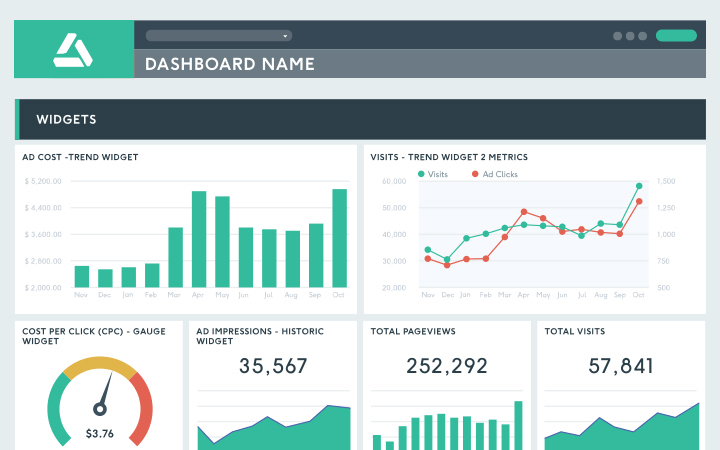 Case Study: DashThis' Small Business Solution
Case Study: DashThis' Small Business Solution
- Company: DashThis, Quebec, Canada (2018)
- What Was Done: DashThis developed a marketing KPI dashboard tailored for small businesses, focusing on simplicity and efficiency. The dashboard aggregates data from various marketing tools into a single, user-friendly interface, offering clear insights into performance metrics such as website traffic, social media engagement, and email marketing results. This solution was marketed to small businesses lacking the resources for complex data analysis.
- Results/Impact: DashThis' solution quickly became popular among small businesses, leading to a 40% growth in the company's customer base within a year. Clients reported an average time saving of 5 hours per month on reporting tasks and a significant increase in their ability to make informed marketing decisions based on real-time data.
The KPI dashboard centralizes these indicators, providing a real-time overview of marketing effectiveness across various channels and campaigns. It's designed to highlight areas of success and pinpoint where adjustments are needed, facilitating a data-driven approach to marketing management.
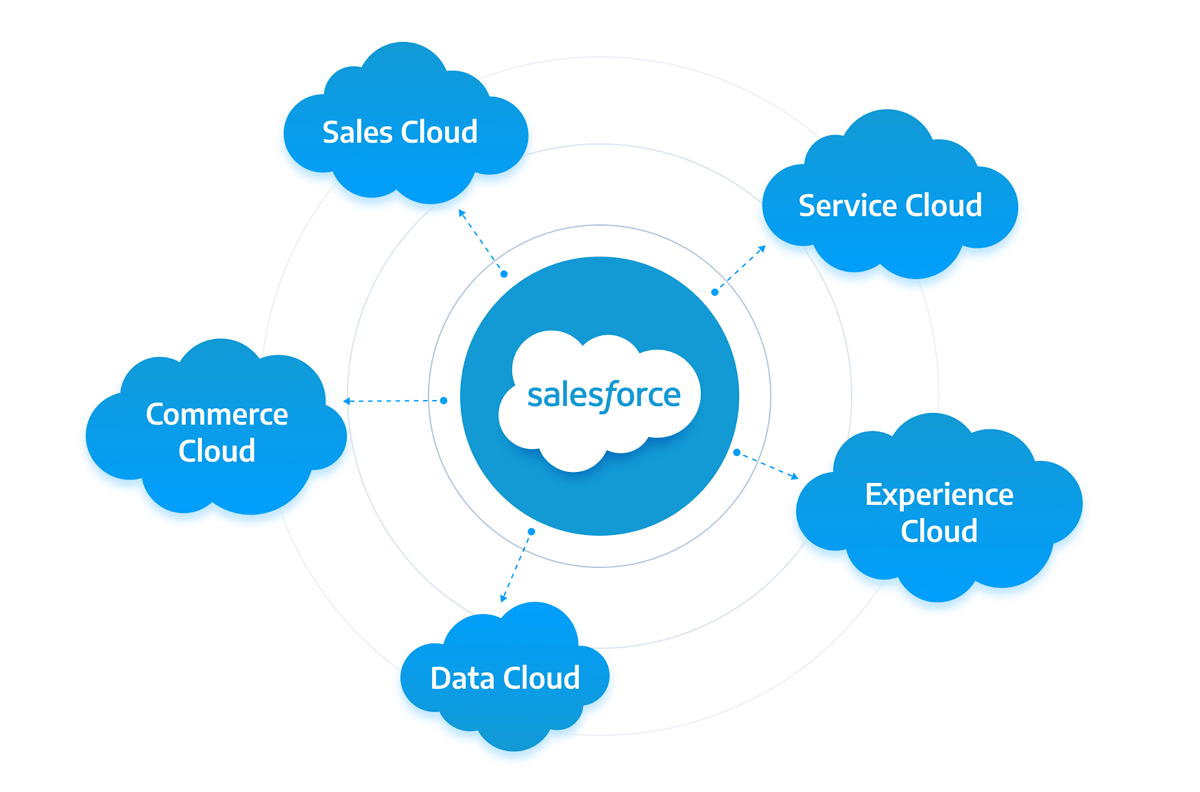 Case Study: Salesforce's Marketing Cloud Integration
Case Study: Salesforce's Marketing Cloud Integration
- Company: : Salesforce, Worldwide (2016)
- What Was Done: Salesforce integrated a comprehensive marketing KPI dashboard within its Marketing Cloud platform. This dashboard allows businesses to track and analyze a wide range of marketing performance indicators in real-time, including customer engagement, campaign ROI, and digital marketing efficiency. Salesforce's initiative aimed to empower marketers with actionable insights to optimize their strategies and drive better business outcomes.
- Results/Impact: The implementation of the marketing KPI dashboard led to significant improvements for Salesforce's clients, with companies reporting up to a 30% increase in marketing campaign effectiveness and a 25% reduction in marketing costs. This innovation has solidified Salesforce's position as a critical tool for marketers seeking to leverage data for strategic decision-making.
Key KPIs typically featured on a dashboard include:
- Return on Investment (ROI): Evaluates the financial return on marketing investments.
- Customer Acquisition Cost (CAC): Measures the cost of acquisition Cost to a new customer.
- Conversion Rate: Tracks the percentage of users who take a desired action.
- Customer Lifetime Value (CLTV): Projects the total value a business can expect from a customer over their relationship.
- Website Traffic: Gauges the volume of visitors to the company's website.
- Engagement Rate: Assesses how actively involved the audience is with the content.
These KPIs, among others, serve as a compass for marketers, guiding strategic decisions and helping to align marketing efforts with business goals. A well-structured KPI dashboard is indispensable for navigating the complexities of modern marketing landscapes, ensuring that every move is measured, analyzed, and optimized for success.

Reach
Reach in the context of marketing and advertising refers to the total number of unique individuals or households exposed to a particular advertisement or campaign within a specific period. It is a measure of the extent to which a message is disseminated to the target audience and is crucial for evaluating the effectiveness of marketing efforts.
Here’s an exploration of the concept of reach and its significance:
Importance of Reach
- Audience Awareness: Reach indicates how many people have seen or heard about your product, service, or brand, thus contributing to increased awareness.
- Campaign Efficiency: Understanding reach helps marketers assess the efficiency of a campaign in penetrating the target market.
- Budget Allocation: Insights into reach can guide decisions on where to allocate marketing budgets to maximize visibility.
- Market Saturation: It helps in determining market saturation levels and identifying opportunities for expansion or further engagement.
Types of Reach
- Organic Reach: The number of unique individuals who see your content without paid promotion, often through word-of-mouth or organic search results.
- Paid Reach: Refers to the individuals exposed to your paid advertising efforts, such as PPC campaigns, sponsored content, or display ads.
- Viral Reach: The extent to which content is shared by individuals beyond the initial audience, expanding visibility through social networks and word-of-mouth.
Strategies to Increase Reach
- Diversifying Channels: Utilizing a mix of traditional and digital marketing channels to expand visibility across different platforms.
- Targeted Advertising: Employing targeted advertising strategies to ensure that content is seen by the most relevant audience.
 Case Study: Huggies Targets Affluent Parents for Premium Nappy Launch
Case Study: Huggies Targets Affluent Parents for Premium Nappy Launch- Company: Huggies, Neenah, Wisconsin, USA (Established in 1978)
- What Was Done: Huggies shifted from its typical mass-reach strategy to target an affluent niche audience for the launch of Huggies Special Delivery nappies in North America. This campaign was designed to appeal to parents seeking a premium experience for their babies, emphasizing quality without compromises. Huggies utilized soft, monochrome photography for a sophisticated aesthetic, akin to a perfume campaign, diverging from the usual nappy ad style. The brand employed addressable TV to target affluent customers more precisely, showing different ads to different households while they watched the same program. Additionally, Huggies launched a highly targeted social media campaign on Facebook and Instagram, partnered with high-end, parent-centric media platforms, and collaborated with micro-influencers.
- Results/Impact: The campaign successfully reached the desired affluent demographic, offering a unique and elevated brand experience. This strategic approach helped Huggies position Special Delivery nappies as a premium product, resonating with parents who prioritize quality and aesthetics. By leveraging targeted media and influencers, Huggies effectively engaged with its niche audience, enhancing brand perception and driving interest in the new product line.
- Key Takeaway: Huggies’ campaign for Special Delivery nappies illustrates the effectiveness of targeted marketing strategies for niche audiences. By understanding and appealing to the specific desires of affluent parents, Huggies successfully launched a premium product with a distinctive, high-end appeal. This approach demonstrates the importance of tailored marketing efforts and the potential for success when a brand moves beyond traditional mass-market strategies to connect with specific consumer segments.
- Content Optimization: Optimizing content for search engines and social media to increase organic reach.
- Engagement: Encouraging audience engagement through interactive content, contests, and social media activities to boost shares and visibility.
 Case Study: Nike's Customer Engagement Strategy
Case Study: Nike's Customer Engagement Strategy- Company: Nike, Beaverton, Oregon, USA (Established in 1964)
- What Was Done: Nike, aiming to motivate rather than guide fitness enthusiasts, developed an inclusive loyalty program, the NikePlus Membership. This program offers a variety of benefits designed to engage and reward users, encouraging continuous progress and brand loyalty.
- Solution: NikePlus Membership provides members with special rewards for successful workouts, customized playlists on Apple Music, and personalized promotions such as early access to products and discounts. The Nike Run Club and Nike Training Club apps further enhance engagement by rewarding users with badges and other incentives when they reach milestones, like completing their first 5k. This approach uses progress to foster customer engagement and loyalty.
- Results/Impact: The NikePlus Membership program has effectively increased customer loyalty by aligning with users' fitness goals and providing continuous motivation. The rewards and personalized experiences offered by the program have encouraged recurring engagement, helping Nike maintain a strong and loyal customer base. The tiered reward system supports users in achieving their fitness milestones, reinforcing their connection to the Nike brand.
- Key Takeaway: Nike's customer engagement strategy highlights the importance of tailoring loyalty programs to meet customer needs and preferences. By offering rewards for recurring engagement and aligning their products with customer goals, Nike has successfully fostered a sense of progress and achievement among its users. This case study demonstrates the effectiveness of inclusive loyalty programs in building long-term customer relationships and promoting continuous growth.
Measuring Reach
- Analytics Tools: Utilizing digital analytics tools to track reach on websites, social media platforms, and advertising networks.
- Surveys and Polls: Conducting market research to estimate brand awareness and campaign reach within target demographics.
- Media Monitoring: Monitoring media coverage and mentions, to assess the reach of PR efforts.
Challenges in Maximizing Reach
- Audience Fragmentation: With the proliferation of digital channels, audiences are more fragmented, making it challenging to achieve comprehensive reach.
- Ad Blocking: The increasing use of ad blockers by consumers can reduce the effectiveness of online advertising campaigns.
- Changing Algorithms: The algorithms of social media platforms and search engines frequently change, affecting the organic reach of content.
The Future of Reach
- As the digital landscape continues to evolve, the definition and strategies for maximizing reach will also change. Marketers must stay informed about emerging technologies, platforms, and consumer behaviors to adapt their strategies effectively. The future of reach will likely involve more sophisticated targeting, personalized content, and the integration of AI and machine learning to predict and enhance the visibility of marketing messages.
In summary, reach is a fundamental metric in marketing that reflects the breadth of audience engagement with a brand's messaging. Effective management and optimization of reach are critical for enhancing brand awareness, driving campaign success, and achieving strategic marketing objectives.

Qualified Leads
Qualified leads are individuals or organizations that have been identified as potential customers who meet certain criteria making them more likely to make a purchase. This qualification process involves evaluating leads based on their interest in the product or service, their purchasing power, and their fit with the target market or buyer persona. The process of qualifying leads typically involves two key stages:
- Marketing Qualified Leads (MQLs): These are leads that have shown interest in what a company offers through engagement with marketing efforts, such as downloading a whitepaper, signing up for a webinar, or clicking on an ad. MQLs have taken an action that indicates potential interest but might not be ready to make a purchase yet.
 Case Study: Ahrefs' SEO Content Strategy
Case Study: Ahrefs' SEO Content Strategy- Company: Ahrefs, Singapore (ongoing)
- What Was Done: Ahrefs implemented a focused SEO content strategy to generate qualified leads. By producing high-quality, SEO-optimized content that addresses specific questions and challenges faced by their target market, Ahrefs attracted visitors who were actively searching for solutions in the digital marketing space. The content was designed not only to rank well in search engines but also to demonstrate Ahrefs' expertise and the value of its tools.
- Results/Impact: This strategy led to a substantial increase in organic traffic to Ahrefs' blog and main website, with a reported 85% of their new business coming from organic search. The high-quality leads generated through this approach resulted in a higher conversion rate and increased customer acquisition for Ahrefs, highlighting the power of targeted SEO content in lead generation.
- Sales Qualified Leads (SQLs): Leads become SQLs once they have been further assessed by the sales team and deemed ready for a direct sales follow-up. SQLs have typically taken actions that indicate a strong purchase intent, such as requesting a product demo or filling out a contact form with specific inquiries.
Qualifying leads effectively allows businesses to focus their resources and sales efforts on prospects with the highest likelihood of converting into paying customers, thereby increasing efficiency and optimizing the sales process. This approach ensures that marketing and sales teams are aligned and working towards engaging the most promising leads, ultimately driving revenue growth and improving the overall customer acquisition strategy.
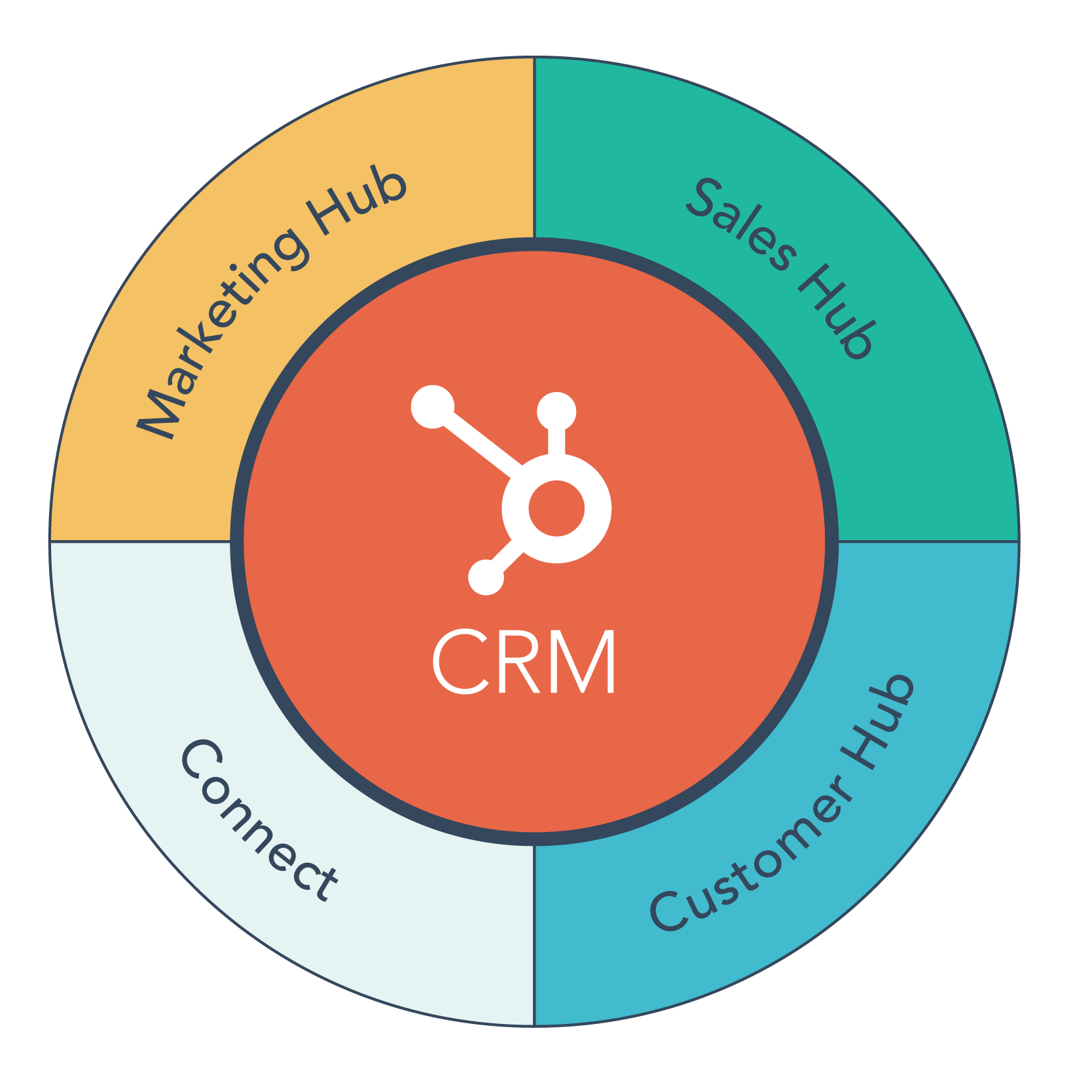 Case Study: HubSpot's Inbound Marketing Success
Case Study: HubSpot's Inbound Marketing Success
- Company: : HubSpot, Cambridge, MA, USA (ongoing)
- What Was Done: HubSpot employed its own inbound marketing strategies to generate qualified leads. By creating valuable content tailored to their target audience, including blogs, e-books, and webinars, HubSpot attracted visitors naturally through search engines, social media, and referrals. The company then nurtured these prospects with personalized email campaigns and lead scoring to identify sales-ready leads.
- Results/Impact: HubSpot's approach to generating qualified leads through inbound marketing significantly increased its lead conversion rates. The company reported a 50% increase in qualified leads year over year, with a 60% decrease in cost per lead, showcasing the effectiveness of content-driven lead generation strategies.
Additionally, sales forecasts can be determined from current customers (repeated purchases) and existing qualified leads (new purchases). For instance, in our consultancy, we discovered that every five qualified leads results in one paying customer. Knowing the average order size per project allows us to anticipate future revenue. Sales forecasting also aids in logistical planning, enabling suppliers to forecast the necessary resources (products, materials, workforce) for upcoming demands.

How Marketing Can Help Sales
Marketing plays a pivotal role in supporting and enhancing sales efforts. By effectively bridging the gap between a company's offerings and customer needs, marketing strategies can significantly boost sales performance. Here’s how marketing can contribute to sales success:
- Generating High-Quality Leads: Marketing efforts, particularly those focused on content marketing and targeted advertising, can attract potential customers interested in the company’s products or services. By nurturing these leads through the sales funnel, marketing ensures a steady stream of relevant prospects for the sales team.
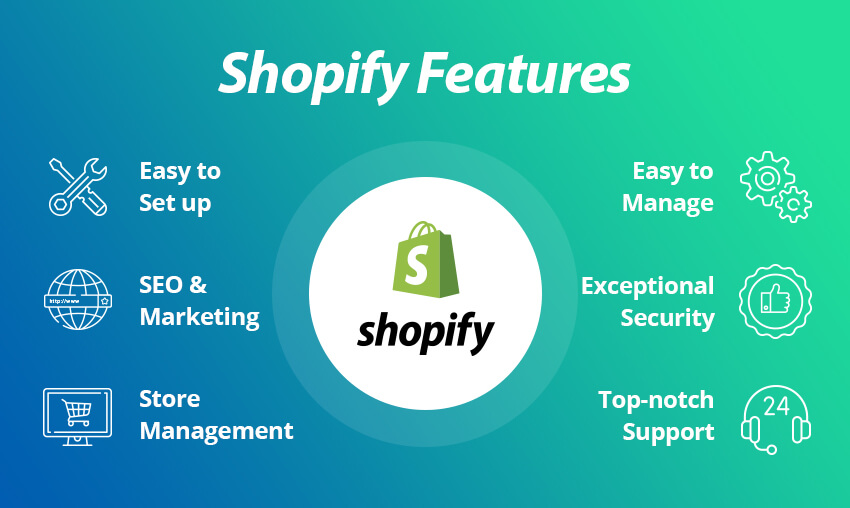 Case Study:
Case Study:
Shopify's E-commerce Ecosystem Expansion- Company: Shopify, Worldwide (ongoing)
- What Was Done: Shopify has consistently marketed its platform as not just a website builder but a complete e-commerce solution for businesses of all sizes. Through targeted marketing campaigns, including content marketing, SEO, and partnerships, Shopify has emphasized its ecosystem of services, including payment processing, shipping, and inventory management, to attract and retain users.
- Results/Impact: These marketing efforts have directly contributed to an increase in sales for Shopify's users, with the platform reporting a total gross merchandise volume of $119.6 billion in 2020, a 96% increase from the previous year. Shopify's ability to market its comprehensive suite of tools has not only driven its own growth but also empowered thousands of businesses to scale their online sales effectively.
- Creating Awareness and Educating Prospects: Through informative content, social media, and advertising campaigns, marketing can educate the target audience about the benefits and unique value propositions of the company's offerings. This builds awareness and sets the stage for sales by informing potential customers about how these offerings can meet their needs.
 Case Study:
Case Study:
Canva's User Empowerment Through Design- Company: Canva, Worldwide (ongoing)
- What Was Done: Canva marketed its platform by emphasizing the ease with which users can create professional-quality designs without any prior design experience. Through strategic content marketing, social media engagement, and user education, Canva has positioned itself as an accessible tool for businesses, educators, and individuals, enabling them to produce marketing materials, presentations, and social media content.
- Results/Impact: Canva's focus on empowering users with the tools to create their own marketing materials has led to significant business growth, with over 30 million monthly active users and a valuation of $6 billion in 2020. By directly addressing the sales needs of its users, Canva has successfully expanded its market reach and user base.
- Establishing Brand Credibility: Consistent and strategic marketing efforts help build a strong brand image and credibility. A reputable brand can significantly ease the sales process, as customers are more likely to purchase from brands they recognize and trust, as well as to agree to pay more for this brand.
- Providing Sales Enablement Tools: Marketing can support sales teams by creating and supplying sales enablement materials such as brochures, presentations, case studies, sales scripts, and product demos. These tools help sales professionals effectively communicate the value of the products or services to potential customers.
- Leveraging Customer Insights: Marketing can gather and analyze data on customer preferences, behaviors, and feedback, which can inform and optimize sales strategies. This insight allows sales teams to tailor their approach to better meet the needs and desires of their prospects.
- Facilitating Customer Retention: Post-sale marketing strategies, such as loyalty programs and regular communication, keep customers engaged and satisfied, leading to repeat business and referrals. Happy customers are more likely to become brand advocates, indirectly supporting sales efforts.
- Aligning Sales and Marketing Goals: When marketing and sales teams work closely together, aligning their goals and strategies, the company can more effectively move prospects through the sales funnel, from initial awareness to final purchase.
- Utilizing Digital Marketing Strategies: Digital marketing tactics, including SEO, email marketing, and online advertising, can significantly extend a company’s reach, making it easier for sales teams to connect with a broader audience.
In essence, marketing not only paves the way for successful sales by generating leads and building brand awareness but also equips sales teams with the tools, information, and support needed to close deals effectively. By fostering a collaborative relationship between marketing and sales, businesses can ensure that their efforts are not only cohesive but also more likely to result in increased sales and revenue growth.

Are Marketing Expenses Tax Deductible
Marketing expenses are generally considered tax-deductible across various countries, as they are essential outlays for promoting business and generating revenue. However, the specifics can vary by jurisdiction, reflecting differences in tax laws and regulations. Here's an overview of how marketing expenses are treated in a few countries:
- United States: In the U.S., marketing expenses are typically tax-deductible as business expenses. This includes costs related to advertising, promotions, public relations, and other marketing activities aimed at attracting customers. The Internal Revenue Service (IRS) allows businesses to deduct these expenses in the year they are incurred.
 Case Study:
Case Study:
H&R Block's Educational Campaign on Tax Deductions- Company: H&R Block, Worldwide (2019)
- What Was Done: Recognizing the complexity surrounding tax deductions for marketing expenses, H&R Block launched an educational campaign targeting small business owners. The campaign included a series of webinars, blog posts, and in-person workshops aimed at clarifying the tax implications of marketing and advertising expenses. The initiative sought to position H&R Block as not only a tax preparation service but also a valuable resource for financial guidance.
- Results/Impact: The campaign was successful in increasing engagement with H&R Block's services among small business owners, with a reported 15% uptick in business client consultations following the campaign. Additionally, the campaign bolstered H&R Block's reputation as a knowledgeable and helpful partner for businesses navigating the complexities of tax preparation, leading to higher customer satisfaction rates.
- Canada: The Canada Revenue Agency (CRA) allows businesses to deduct advertising costs in Canadian newspapers, television, and radio, along with other marketing expenses. However, there are restrictions on deducting advertising costs incurred on foreign websites.
- United Kingdom: Similar to the U.S., the UK permits businesses to deduct marketing and advertising expenses from their taxable income. According to Her Majesty's Revenue and Customs (HMRC), these expenses must be wholly and exclusively for the purpose of the business to be deductible.
- Germany: In Germany, marketing expenses are generally considered tax-deductible as business expenses. This includes costs associated with advertising, promotional materials, and market research. The expenses must be directly related to the business and intended to generate income. Like many countries, the deductibility is contingent on the expenses being deemed necessary and reasonable for the operation of the business.
- France: French tax law allows businesses to deduct marketing and advertising expenses, provided they are incurred in the interest of the business and documented properly. France emphasizes the need for expenses to be directly connected to business activities and prohibits the deduction of certain types of expenditures, such as those related to lavish or extravagant promotions.
- Italy: Italy permits the deduction of marketing and advertising expenses from corporate income, as long as they are incurred for business purposes and properly documented. Italian tax law requires that these expenses be reasonable and justifiable in the context of the business's operational needs and income generation goals.
- Israel: In Israel, marketing expenses are generally deductible, provided they are incurred wholly and exclusively in the production of income. This includes a wide range of promotional activities. However, the Israel Tax Authority may scrutinize expenses to ensure they are not personal in nature and are indeed necessary for generating business income.
- Australia: The Australian Taxation Office (ATO) considers marketing and advertising expenses as deductible if they are directly connected to the earning of assessable income. This includes a wide range of promotional activities.
- China: China's tax law allows businesses to deduct marketing and advertising expenses, but with certain limitations and conditions. For example, there may be caps on the amount that can be deducted, based on a percentage of sales revenue. It's important for businesses operating in China to be aware of these limitations and to maintain thorough documentation of their marketing expenditures.
- India: In India, marketing expenses are deductible as long as they are incurred solely for the purpose of the business. The Income Tax Act allows for the deduction of these expenses under business or profession-related expenditures.
It's important to note that while marketing expenses are generally deductible, the extent and nature of what is considered an allowable deduction can vary. Some countries may have specific exclusions or limitations, particularly concerning entertainment, gifts, or sponsorship costs.
 Case Study:
Case Study:
Bench Accounting's Small Business Tax Guide
- Company: Bench Accounting, USA (2020)
- What Was Done: Bench Accounting, an online bookkeeping service, created a comprehensive guide on tax deductions available to small businesses, including those related to marketing and advertising expenses. The guide was promoted through email marketing, social media, and partnerships with small business influencers, aiming to demystify tax deductions for Bench's target audience.
- Results/Impact: The initiative led to a significant increase in Bench's brand visibility and user engagement, with a 25% rise in website traffic and a 40% increase in new client inquiries in the months following the guide's release. By providing valuable, actionable content, Bench strengthened its position as a trusted resource for small businesses, contributing to its overall growth and customer loyalty.
For businesses operating internationally, understanding the tax implications of marketing expenses in different jurisdictions is crucial for effective financial planning and compliance. Given the complexity of tax laws and the potential for variation even within a country based on specific situations, professional advice is essential to navigate these regulations effectively.

Marketing Budget
Setting a marketing budget is a critical step for any business aiming to effectively promote its products or services while ensuring optimal use of financial resources. A well-planned marketing budget aligns with company goals, targets the right audience, and adapts to market dynamics. Here’s how to approach creating a marketing budget:
- Define Business Objectives: Start by clearly defining what you want to achieve with your marketing efforts. Objectives can range from increasing brand awareness, boosting sales, entering new markets, to improving customer retention.
- Understand Your Target Audience: Knowing who your customers are, where they spend their time, and what messages resonate with them will help you allocate your budget more effectively across various channels.
- Review Past Performance: Analyze the results of previous marketing campaigns to identify what worked and what didn’t. This historical data can guide budget allocation towards more successful strategies.
- Assess the Competitive Landscape: Understanding what competitors are doing in terms of marketing can provide insights into industry standards and help you identify opportunities to stand out.
- Allocate Budget Across Channels: Divide your marketing budget across different channels based on their relevance to your audience and objectives. Common channels include digital marketing (SEO, PPC, social media), traditional advertising (print, radio, TV), events, and content marketing.
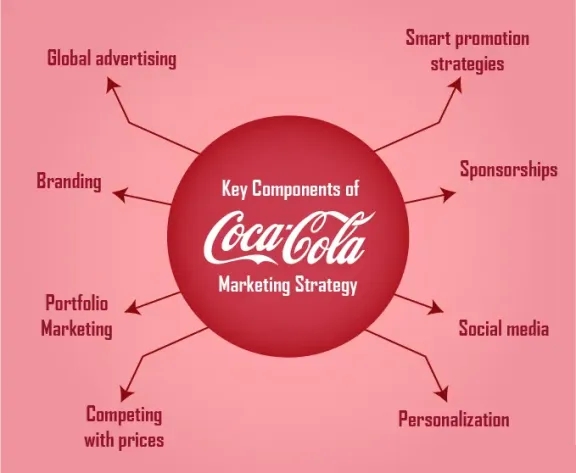 Case Study: Coca-Cola's Dynamic Marketing Budget Allocation
Case Study: Coca-Cola's Dynamic Marketing Budget Allocation- Company: Coca-Cola, Worldwide (2018)
- What Was Done: Coca-Cola implemented a dynamic marketing budget allocation strategy, using real-time data analytics to adjust its marketing spend across various channels based on performance and market trends. This approach allowed Coca-Cola to optimize its marketing investments by channeling resources into the most effective campaigns and markets.
- Results/Impact: This strategic budgeting approach resulted in a 4% increase in Coca-Cola's global sales volume for the year. The company's ability to agilely adjust its marketing spend in response to real-time feedback and market conditions significantly enhanced its ROI on marketing investments.
- Factor in Marketing Tools and Technologies: Include the cost of essential tools and technologies for marketing automation, customer relationship management (CRM), analytics, and creative production in your budget.
- Set Aside a Contingency Fund: It’s wise to allocate a portion of your budget for unforeseen opportunities or challenges. Markets can change rapidly, and having a flexible budget allows you to adapt.
- Monitor and Adjust: Marketing is dynamic; regularly review your budget’s performance against your objectives. Be prepared to reallocate funds as needed to optimize results.
- ROI Focus: Aim to understand the return on investment for each marketing activity. This focus will help in allocating the budget more efficiently, emphasizing strategies with higher returns.
Creating a marketing budget requires a balance between ambitious marketing goals and financial realism. It’s a strategic tool that should be flexible enough to adapt to changes in the business environment and consumer behavior. Effective budget management ensures that every dollar spent contributes to achieving business objectives, maximizing the impact of marketing efforts.

Marketing Budget Template
Crafting a marketing budget template is essential for tracking and managing your marketing spend efficiently across various campaigns and channels. A comprehensive template not only guides your allocation of resources but also provides insights into the effectiveness of your marketing efforts. Here’s a basic outline to create a marketing budget template:
- Header Section:
- Budget Name: Identify the budget (e.g., Q1 Marketing Budget, 2023 Annual Marketing Budget)
- Time Period: Specify the time frame the budget covers.
- Prepared By: Name of the person or team creating the budget.
- Marketing Objectives: Briefly list the key marketing objectives this budget aims to support, such as increasing website traffic, improving conversion rates, or expanding market share.
- Budget Categories:
- Channel/Campaign: List each marketing channel or campaign (e.g., Digital Advertising, SEO, Content Marketing).
- Planned Spend: Estimated budget for each channel or campaign.
- Actual Spend: Actual expenses incurred, to be filled in later.
- Variance: Difference between planned and actual spend, calculated automatically.
- ROI (Return on Investment): Measure of the profitability of each channel/campaign, calculated based on performance metrics.
- Summary Section:
- Total Planned Spend: Sum of all planned spend across channels/campaigns.
- Total Actual Spend: Sum of all actual spend, updated over time.
- Overall Variance: Difference between total planned and actual spend.
- Total ROI: Overall return on investment from the marketing budget.
- Notes and Adjustments: Space for notes on assumptions made during budget planning, adjustments based on performance, and any other relevant comments.
To implement this template, you can use spreadsheet software like Microsoft Excel or Google Sheets, which offer robust features for calculations, charting, and sharing information with team members.
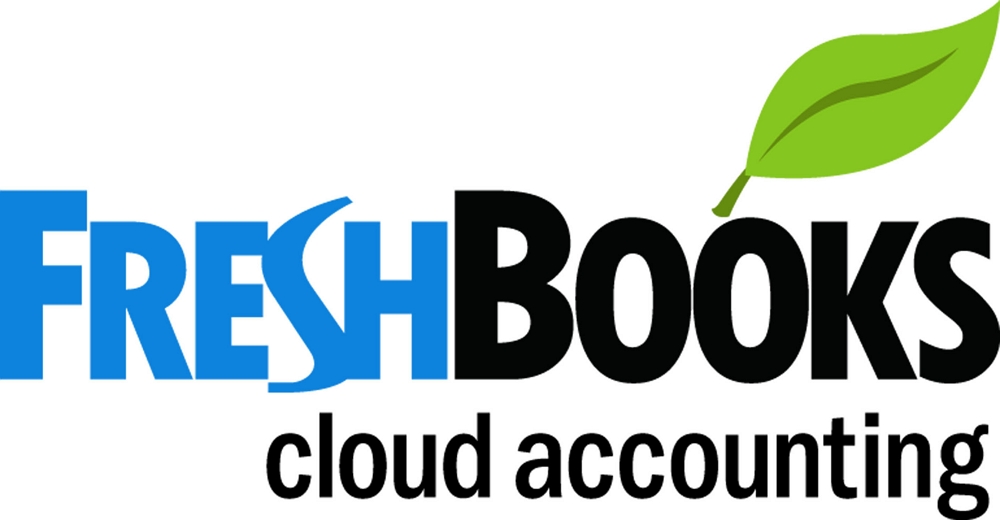 Case Study:
Case Study:
FreshBooks' Marketing Budget Templates for Freelancers
- Company: : FreshBooks, Canada (2018)
- What Was Done: FreshBooks, an accounting software for small businesses and freelancers, developed and marketed a set of customizable marketing budget templates specifically designed for the freelance market. The campaign highlighted the importance of allocating and managing marketing funds efficiently, offering guidance on budget planning and tracking to ensure a positive ROI. The templates were promoted through FreshBooks' content marketing channels, including blog posts, webinars, and email newsletters.
- Results/Impact: This targeted initiative led to a noticeable increase in engagement on FreshBooks' platform, particularly among freelancers and small agencies who often struggle with marketing budget management. The company reported a 15% increase in the adoption of their budgeting tools and templates, with users praising the simplicity and effectiveness of the resources. FreshBooks' efforts in providing tailored budgeting solutions reinforced their commitment to supporting small businesses and contributed to an overall improvement in customer satisfaction and retention.
Many free resources for ready-made marketing budget templates are available online, including:
- Template Websites: Platforms such as Template.net, Smartsheet, and HubSpot offer specialized marketing budget templates that you can download and adapt to your needs.
- Microsoft Excel: Offers a range of built-in budget templates that can be customized for marketing purposes.
- Google Sheets: Provides access to shared, collaborative budget templates suitable for marketing teams.
 Case Study: Mint's Personal Finance Management Tools
Case Study: Mint's Personal Finance Management Tools
- Company: Mint, USA (2011)
- What Was Done: To help individuals and small businesses better manage their finances, including marketing expenses, Mint introduced a suite of personal finance management tools that included customizable budget templates. These templates were marketed as an easy way for users to track and manage their spending, with specific categories and suggestions for marketing budgets based on industry standards and financial goals.
- Results/Impact: Mint's introduction of these budgeting tools and templates saw a substantial increase in user engagement, with a 20% rise in new sign-ups in the months following the launch. By providing valuable resources for financial planning, Mint not only enhanced its product offering but also solidified its position as a leader in personal finance management. The campaign effectively increased awareness and usage of Mint's budgeting features among small businesses and freelancers.
Remember, the effectiveness of a marketing budget template lies in its regular review and update. Adjusting your budget based on actual spend and ROI data ensures that your marketing efforts remain aligned with your business objectives and market realities.
Marketing Strategy and Consulting
Interested in getting help with your marketing efforts and marketing strategy?
Contact us: info@zooz.co.il ,+972-9-958-5085
Marketing Articles
- Marketing Overview
- Marketing Goals
- Marketing Metrics
- Marketing Types
- Marketing Channels
- Demographic Marketing
- Marketing Business Models
- Industry-Specific Marketing
- Professional Services Marketing
- Marketing Strategy
- Market Research
- Marketing Communications (MarCom)
- Marketing Execution
- Makreting Careers
- Marketing Education
- Marketing Glossary (200 terms)
- Marketing Versus Other Disciplines
- Marketing Agencies and Outsourcing





